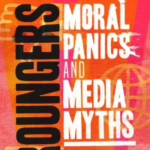Why was the Nobel Prize in Physics for 2024 so controversial?

This year, the Nobel Prize in Physics caused quite a stir. The winners, John Hopfield and Geoffrey Hin ton, were awarded the accolade “for foundational discoveries and inventions that enable machine learning with artificial neural networks”. Their work has paved the way for advances in artificial intelligence (AI) technologies that are now being used to make game-changing discoveries in particle physics, protein structure biology and materials science.
But you might be thinking, why physics? Isn’t this a computer science discovery? Many in the physics community had a similar reaction. The link is that Hopfield and Hinton both used concepts from physics – energy states, systems of interacting parts, and optimisation – to design AI models that mimic how the brain processes information.
Hopfield applied ideas from physics to create a model system for how the brain stores and recalls memories. He imagined neurons (brain cells) as be having like particles. The bonds between particles store energy, and nature likes physical systems to be in states where this stored energy is minimised. Any disruption that increases the energy will cause the system to rearrange itself until it returns to a state of balance, or the lowest energy configuration.
Hopfield proposed that this concept could be applied to neurons and memory, with the stored pattern represented as the lowest energy state of a neural network. In which case, the system could “remember” patterns – like an image or a sound – by rearranging to find the lowest energy state configuration, even if only part of the pattern is available.
Hinton took things a step further by creating a method that helps machines to learn from their mis takes. His algorithm helps AI systems learn by adjusting “weights” (connections between artificial neurons) to minimise errors, much as physical systems optimise energy states to achieve balance.
Both men took descriptions of the physical world and applied them to the digital realm, showing that physics can be used to make machines learn, remember and recognise patterns, just as humans do.
This article is a preview from New Humanist’s winter 2024 issue. Subscribe now.

